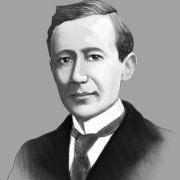


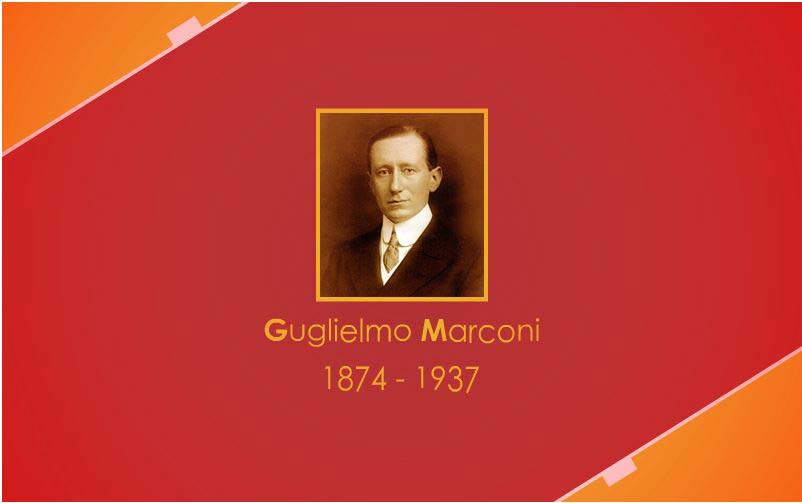
Introduction
How many of us hear these every day, 91.5 FM, Radio Mirchi and many more such channels. Just a click gives us hours and hours of entertainment, information of events around the world, stories, and what not. Most importantly, you don’t even have to plug in a wire to do so. You must have guessed by now what I am speaking about. Yes, I am talking about the Radio, a pioneer in wireless technology. Because of this technology we can speak even with the orbiting satellites and sailing ships besides enhanced activity, anytime anywhere work, remote area access, emergency alerts, on-hand entertainment and communication through empty miles, then be it space, land or water. The credit for all this goes to that one person who believed in wireless technology, especially when it was considered an impossible task. This one belief led a man to invent the radio, and he was Guglielmo Marconi.
Guglielmo Marconi comes across as a face that got excited with the scientific inventions around him and believed that he could establish an invention which was only spoken of as “not possible”. He had a never- give- up attitude. People saw him as a person who was charming, emotional, dedicated towards his work and used to achieving success. Determination, hard work and believing in oneself is what Guglielmo Marconi was all about. Today, radio makes up the base of nearly all modern long-distance communication.
Radio, an invention that played a vital role in saving lives when the Titanic was sinking. To know how, let’s wander through Guglielmo’s life. How a young boy without any formal education established himself as an inventor using only his skills and determination.
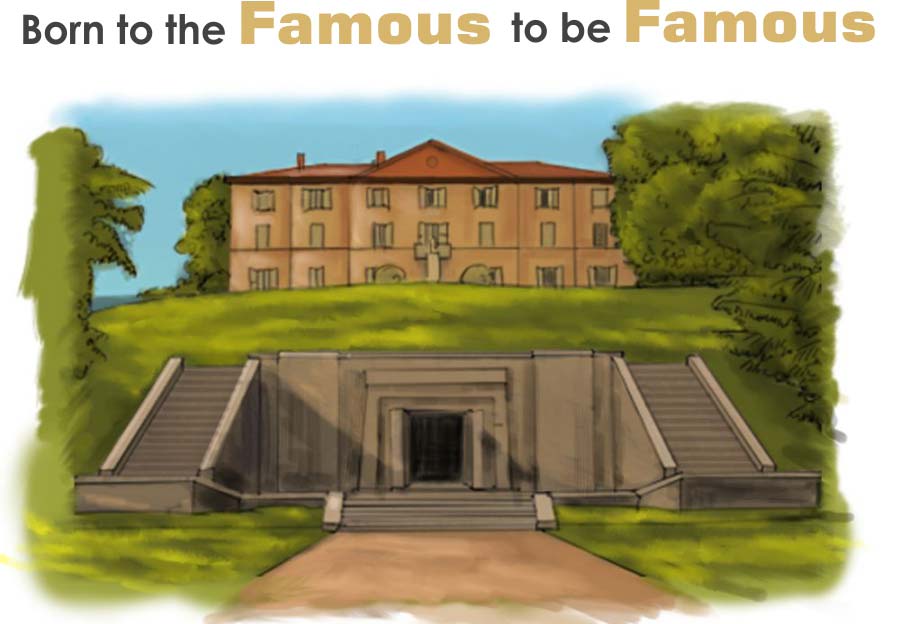
Born to the famous to be famous
April 16, 1864, a young Scottish girl Annie Jameson who was born in a family of Irish brewers and distillers, ran away from home to marry a young handsome Italian silk merchant, a rich and handsome widower, Giuseppe Marconi.
Bologna, North Italy, 25th April, 1874, Annie gave birth to her second son and named him Guglielmo, a name similar to that of his father. Her first son was born in 1865 and was named Alfanso. Guglielmo was baptized in the Catholic Church and was brought up as a Protestant by his mother and thus, he later became a member of the Anglican Church. Due to intense travelling for their silk business, the Marconi family was unable to send their children to school. To compensate for the loss of education, the same was provided by private tutors.

Knowledge at an early age
The Marconis loved to travel and Guglielmo Marconi, (whom we will refer to as Marconi here onwards), accompanied his mother on many such trips. During these trips he would receive tuitions from different tutors on various subjects, including languages like English and Italian.
In the same period, there were many ongoing experiments related to electricity. Little Marconi found them to be so interesting that he got involved in experimenting at a very tender age. This interest was noticed by his mother and she encouraged him to experiment in a small room in her house which was on the top floor of a four square white house. It was known as the bug room. After entering the room once, Marconi would not come out for hours, re-experimenting the existing ongoing experiments, however and whatever he understood off them.
From 1880 to 1894, till the age of 20, Marconi attended a school in Florence and then moved on to the Institute of Leghorn, where he developed a keen interest in Physics. But he soon left the institute as he saw the time utilized for education as a barrier for conducting his experiments. His father was unhappy about this decision, but his mother knew that there was something special about her son and that the future held something good for him. Just like a loyal and understanding mother, she requested one of her neighbour Professor Righi to act as an adviser to young Marconi. This was the beginning for what was to happen and change the lives of people.

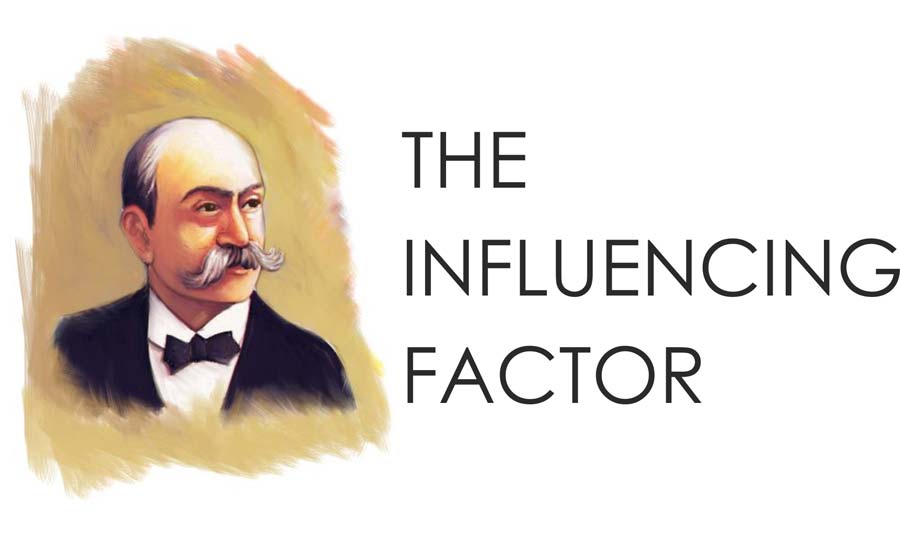
The influencing factor
In the beginning of 1888, a major scientific development took place. ‘Heinrich Hertz’ a scientist, proved the existence of electromagnetic radiation which were known as ‘Hertzian waves’ and later on as ‘radio’. Hertz’s work was published in the beginning of 1888 when Marconi was only 14 years old. Hertz died in 1894 and during these six years, Marconi read and followed upon the works of Hertz. To gain more knowledge about the same, he acquired permission to attend the class of Augusto Righi, a physicist in the University of Bologna, who was also conducting research on high frequency radio signals.
At the same time, there were many other inventors who were trying to develop the wireless telegraph system in order to eliminate the wire needed to connect the electric telegraph. Unfortunately, no one had been successful till now.<
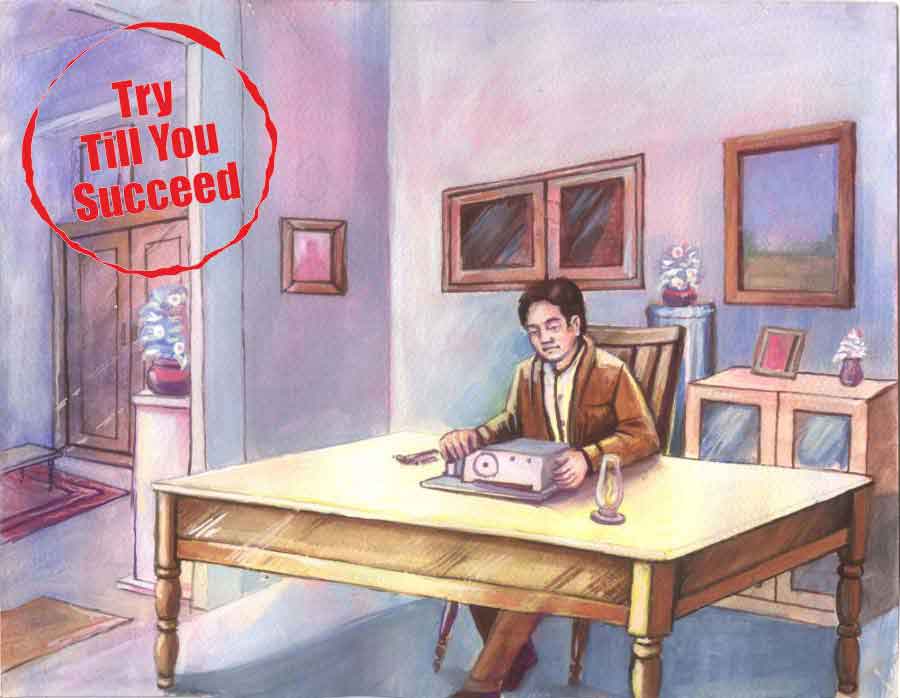
Try till you succeed
If there is anyone who has proved this saying right, then it is Marconi. While experiments and transmissions made by Righi were applicable only for a short distance, Marconi was convinced that long-distance wireless telegraph was also possible.
In the autumn of 1894, Marconi began his journey towards his strong belief and goal- long-distance transmitter. He built his first laboratory in his bug room at his father’s country estate at Pontecchio.
It is here that he started his experiments by re-experimenting inventions which were already done by inventors like Maxwell, Hertz, Righi, Lodge and others. While doing so, he started adding his own equipment in the device. There were many trials and error till he gained knowledge of the physics of an instrument he was working upon.
His original experimental equipment consisted of, one- a simple spark-gap transmitter closely modelled after Righi’s, which was in itself very similar to the transmitter which Hertz had employed in his experiments; Two- a standard telegraph key to control the transmitter and produce short and long pulses creating the dots-and-dashes needed for Morse code signalling(a method of transmitting text information as a series of on-off tones, lights or clicks that can be directly understood by a skilled listener or observer without special equipment) ; Three – A filings-coherer receiver which was activated by the transmission of the radio signals. This was a modified version of Edouard Branly’s original ‘radio-conductor’ with refinements to make it smaller, more sensitive and more reliable. (Marconi later estimated that he spent over 1,000 hours perfecting his coherer); Four- A recording device, controlled by a relay action triggered by the coherer. Initially, this was a ringing bell, but in keeping with Marconi’s ultimate objective, the final design called for the substitution of a telegraph register to record the received Morse code on a roll of paper tape.
After three months of experimenting day and night, one fine day Marconi woke up his mother and walked her to his laboratory which was full of instruments and experimental apparatus. He tapped a telegraphy key set on a bench under the window and his mother could hear a bell ring at the far end of the double room. It was very clear that there were no wires connected between the far ends.
So what was this? Did Marconi become successful at that very instant?? Let’s find out.

Struggle to reach the Distance
Marconi’s father was not so excited about the bell as he thought it was a fluke and was not happy with his son spending money on experiments with no outcome. He stopped supporting him financially to such an extent that one day Marconi sold his shoes to buy metal and battens. His mother could not see her son fail and would come up with ways to help her son move on. She would secretly give him whatever money she could get.
Marconi was not happy with his father’s behaviour and wanted to prove to him his capability and desire of his inventions. For the next six months, he experimented with the bell at various distances within the house. He kept on adding the range of impulses from across the room till a bell was heard on the ground floor of his four- storied bungalow, and then later at the end of the garden. All this while, his father was noticing the advancements his son was making, so one fine day, he approached him and advised him that one click was not enough for a signal as it could be a coincidence. He suggested that he should use 3 dots for an S in the Morse code which later on became the Marconi standard test. Marconi felt victory in his father’s acceptance of his work. His father had now agreed to provide him with all the financial help which would be required by a business man. And for the same, he asked Marconi to explain his invention and its principles.
By this time, Marconi had already crossed the 30 foot length barrier and could send signals all over the house. Giuseppe, his father, was hesitant but he also knew that Marconi had a bright future with a big business. So, he gave him enough money to purchase all the required material needed for the inventions.

Modification to reach out
While experimenting, Marconi frequently visited Augusto Righi, and the conversation always helped him find answers for modification of his experiments. September 1895, Marconi was 21 when he conducted his first successful experiment outdoors. He used 95% nickel and 5% silver as the metals required for the apparatus. This experiment was known as the ‘Experiment of the Celestin Hill’, as that was the name of the hill which was 1700 meters away from his house, the distance he had covered sending signals to successfully. The first long-distance signal was sent with trial and error experiments. He had learnt the use of an antenna and how the height and metal slabs in air and on earth made a big difference in sending long-distance signals. The discovery was made as he had reached out in the open air without wires.
His father, who had invested in his experiment was thoroughly convinced of Marconi’s ideas and extended his full financial support.

It’s Show time
During the 19th century, London was considered the commercial and financial hub of England. Hence, in February 1896, Marconi travelled to England with his mother to promote his invention commercially and for military application. This was because Italy and the minister of the country did not welcome his idea and declined his theory by saying that electromagnetic waves were not suitable for telecommunications. In England, they met his cousin Henry Jameson Davis, who was an engineer. He introduced Marconi to A.A Campbell Swinton, who was a Scottish Consulting electrical engineer. He too was impressed by Hertz’ experiments and followed them in depth. Swinton was able to make a connection with William Preece, the chief engineer of the post office who had performed many wireless experiments and was a well recognized icon in wireless telegraphy. Due to this common interest, Swinton introduced Marconi to Preece. Preece was impressed by Marconi’s experiments and decided to finance his demonstrations conducted by the British Government.
The first demonstration was set up on the roof top of two buildings in London in July 1897. It was a success and now further demonstrations were required. In March 1897, the first Morse code transmission was sent across the Salisbury Plain at a distance of about two and a half kms and this time, representatives from the War Office and the Admiralty were also present. Parabolic reflectors at the transmitter and receiver were used to show the directional properties of the waves. This showed that secrecy could be maintained during transmissions. But as 2.5 kms was a short distance, Marconi carried out more experiments for the next six months and managed to cover a distance of 7kms in September. This time, he used balloons to raise the height of the conventional antennas.
After this success, Marconi decided to replicate the work of Preece. This time, a distance of 15 kms was achieved. Impressed by this, Preece decided to introduce Marconi’s work to the public. Marconi gave two lectures : ‘Telegraphy without Wire’, this was the first lecture which was delivered at the Toynbee Hall on 11th December,1896, followed by his second lecture “Signalling through space without wires”, on June 4,at Royal Institute. A 22 year old Marconi became an instant celebrity with them.
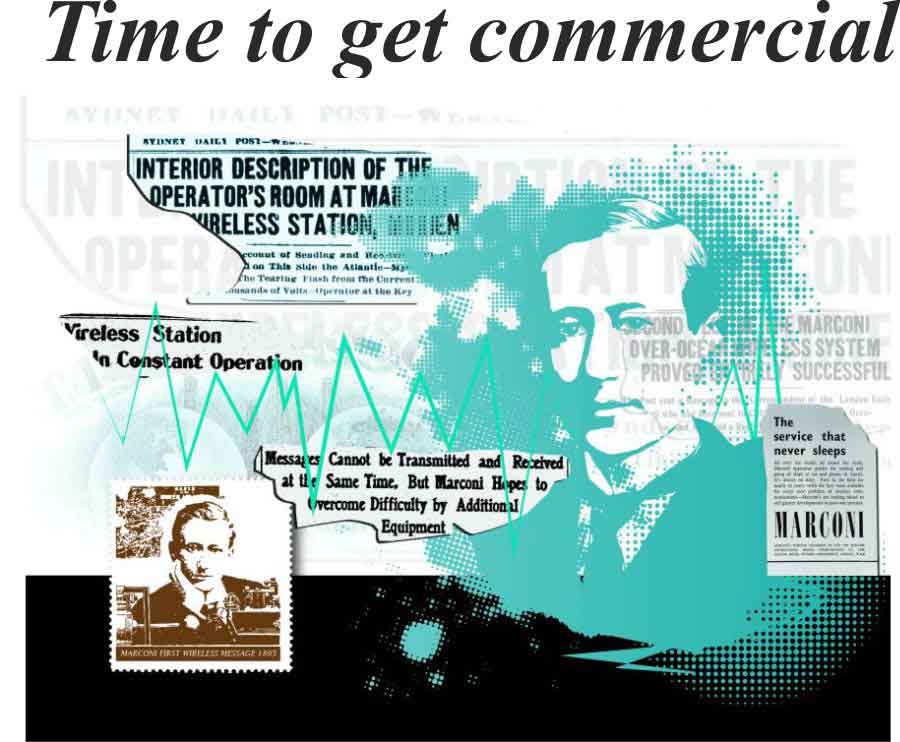
Time to get commercial
On 2nd June,1897, following his newly found fame, Marconi applied for a patent with the British Patent office describing in general his radio device. He received it on 2nd July, 1897, for the system of wireless telegraphy- British Patent NO 12.039, for improvements in Transmitting Electrical Impulses & Signals, and its apparatus. He was now ready to start his own company as an entrepreneur. In July 1897, he returned to Italy and on 20th of the same month, his company ‘Wireless telegraphy & Signal Company Limited’ was founded with financial help from his family members. This foundation allowed him to further borrow money for his experiments and developments.
Marconi continued with his experiments and in late 1897 he erected masts over 40 meters high outside the Needles Hotel on the Isle of Wight. From here, he made transmissions which he received on a boat which streamed up and down the Solent( a major shipping route for passengers, freight and military vessels) to test reception over the sea. He conducted a series of tests at La Spezia, sponsored by the Italian government. Here he managed to transmit signals at a distance of 30kms and also established that transmissions could be unfailingly made over water.
{Note: Radio masts and towers are typically tall structures designed to support antennas (also known as aerials) for telecommunications and broadcasting, including television. They are among the tallest man-made structures. Similar structures include electricity pylons and towers for wind turbines.}
In November 1897, the first radio station in the world was constructed on the south coast of England at the Needles Isle of Wight. In 1898, Marconi built the world’s first ‘wireless telegraph’ factory, located at Hall Street in Chelmsford, England,
which had 50 employees to start with. A commercial firm Lloyds got interested in setting up a radio station to communicate with ocean vessels approaching the dock. The result was that two ships were transmitted with Marconi’s radio Telegraph appliance which exchanged radio signals 140kms away. This was known as telegraphy.
During his test in July 1898, Marconi sailed aboard a ship- Ragatus of Dublin and sent news of its arrival in real time to Dublin’s daily express which was published before the boat returned onshore. Marconi was becoming famous and the news reached Queen Victoria who commissioned Marconi to install a connection between her residence in Isle Wight and the Royal Yacht that was cruising in the channel, on which Prince of Wales had injured a leg. 150 messages were sent in 16 days.
Marconi decided to make an international attempt and in 1899 a mast was set up at South Foreland and Wimereux near Boulogne, and the first successful international wireless transmission was made. The transmission was also picked up over 130 kms away in Chelmsford which was a very significant discovery. Due to this, he received a large order from the British navy for wireless transmitters.
Marconi had already spent a lot of money on research but not many orders were coming. On 8th November, 1899, ‘Marconi Wireless Telegraph Company of America.Inc’ (also known as American Marconi) was established followed by changing the name of his first company as per his father’s suggestion, to ‘Marconi Wireless & Signal Company’ in March 1900. ‘Marconi International Marine Communication Ltd’ was established on April 25th, 1900, which leased ‘Marconi equipment’ to shipping lines and also provided operators to work for the wireless company. Passengers on ship were soon sending telegraphs by radio called ‘Marconi grams’.
Marconi had now started hiring important associates with technical skills which he lacked in himself. Some of his employees were Oliver Lodge who conducted research on lightning and electricity, John Ambrose Fleming, an English electrical engineer and physicist, and R.N. Vyvyan, an engineer. On April 26, 1900, he applied for another patent on an invention which not only increased the efficiency of the apparatus ‘Lithrto’, employed by Marconi, but was also able to control the action which made communications successfully with one or more stations. He was granted the patent 7777 which became famous as the 4 sevens. His new invention was based on part of work done by Sir Oliver Lodge who had tuned the sending and receiving aerials.

Capturing Atlantic after failure
The first step was to convince his clients that the test was worth every penny invested. The sites were selected- either side of Atlantic at Poldhu in Cornwell and Cape Cod in Massachusetts. This selection of sites would enable long range radio experiment. A massive antenna consisting of a ring of 20 masts over 60 meters high was erected at Poldhu.
The first set up supported a cone of wires which was the actual antenna. Marconi’s assistant Vyvyan was concerned over the design of the antenna which was neglected by Marconi. The day came when a strong breeze distorted the antennas at both the sites. It is said that Vyvyan would have been dead in this accident as one of the antennas just narrowly missed him as it fell.
The antennas had collapsed. It was a massive blow to Marconi and his company. Marconi however did not stop and he again built the antenna, this time a bit smaller. He also moved the site of the American station to New Foundland to shorten the distance. The antenna was kept as simple as possible and was supported with kites and balloons tied with a wire.
The test recommenced in December 1901. The Poldu station transmitted the letter S consisting 3 dots for 3 hours daily. The reason to choose this letter was that it could be easily recognized and most importantly, because the new design of the transmitter was not trusted to transit dash without the risk of a break down. On December 12, 1901, Marconi declared that he had heard signals at 12:30pm, 1:10am and 2:20am. The news spread, but not everyone was convinced that it was true as the weather of New Foundland did not support the experiment.
Though Marconi was convinced that he had heard the signals, yet, at the same time he was aware of the fact that the signals were too weak for a full message to reach across Atlantic. Marconi was now not allowed to repeat the experiment as the local telegraph company exerted its right to a monopoly and Marconi was forced to close his station in New Foundland.
Marconi did not give up and he worked on a better organized experiment which he conducted aboard the ship SS.Philadelphia. Marconi experimented with new antennas at Poldhu to resolve the problem and while doing so, he noticed a wire on the ground which was pointing towards Glace Bay, was giving a much stronger signal than his other antennas. This development resulted in the inverted ‘L ‘antenna which is used till date. In February 1902, the ship sailed westward from Great Britain. Marconi recorded the signals sent from Poldhu station daily at regular intervals. This time the signals were stronger and were heard farther at night than during the day. They were being received upto a distance of 2490kms. Marconi had come to a conclusion that the medium and long wave travelled a great distance during night.
It was now time to capture the Atlantic. By 1902, seventy ships had Marconi Systems installed on board. Marconi had started using magnetic detectors which provided higher level of sensitivity and faster signalling with less interference. He was certain that his company would soon be able to provide radio telegraph service. And on December 17, 1902, a station located at Glace Bay, Nova Scotia Canada, sent the first radio message cross Atlantic in an eastward direction. On 18th January, 1903, Marconi opened a station at Cape Cod, near Boston with a radio telegraph of President Theodore Roosevelt to S.M.King Edward VII of England. In 1904, Guglielmo Marconi received the honorary degree by the University of Bologna as an appreciation for his work.

Love is in the air
In the summer of 1904, during one of his visits to London, Marconi saw a 19 year old girl, who according to him was awfully dressed that day. Still Marconi fell in love with her. This lady was Beatrice O’Brian, daughter of the 13th Baron Inchiquin. Marconi wanted to marry a high spirited country girl and Bea, as she was fondly called by Marconi, was that girl. Marconi proposed Bea during a charity ball, but Bea refused. She was not sure if Marconi would be the same as the other guys his age, simply because he was famous. Once during his journey to Balkans he got affected by malaria. This was the time he received a letter from Bea apologizing for rejecting him and asking him to meet her again.
This was exactly the thing Marconi was waiting for. He went to visit her and as days passed by Bea started falling in love with Marconi. After a few days of courtship, Bea accepted his proposal. In December 1904, when Bea and Marconi were in Condon, he bought her an engagement ring and asked her mother’s permission to marry Bea. After a lot of conversation, agreements and disagreements from Bea’s huge family, everybody agreed. On March 16, 1905, Bea and Marconi got married in SA George Hanover Square, London.

Life moves on with surprises
Marconi had to cut short his honeymoon as he had to be back in London due to work commitments. This did not go down well with Bea. Marconi always lived in hotels and Bea was quite new to this concept, as she came from a family who lived in huge houses.
Marconi wanted to inspect the Nova Scotia station to check the transatlantic wire. Both Bea and Marconi sailed for America on the ship Campania. During this trip, Marconi groomed Bea to meet reporters and answer their questions. He even taught her the Morse code. Bea was now replying to letters which were being piled up on Marconi’s desk. But she felt this to be a very boring job.
In 1905, Marconi took Bea to a tiny village of Port Morin on the outskirts of Glace Bay, a place chosen by Vyvyan to build an antenna suitable to use a larger wave length. Bea had grown up in a rich family with big houses and servants, and now she had to share a house with Mr. and Mrs. Vyvyan.
In February 1906, Bea gave birth to a beautiful daughter, whom they named Degna. She was their first child. In the same year, the first regular radio transmission between Poldhu and Cape Cod was established. In 1907, the first radio telegraph intercontinental service between Europe and US was established with an exchange of official message between the King of England and the Government of Canada. By this time, Marconi had perfected the system of transatlantic wireless. It was after the fall of 1907 that Marconi was able to provide full reliable service with ease.
However, he was still unable to provide clear and reliable transatlantic communication during daylight, especially summer.
In 1908, Marconi’s company opened to the public the service of sending telegrams between UK and Canada. The commercial application of wireless was born. On 10th December, 1909, Marconi and Ferdinand Braun were awarded the Nobel Prize for Physics for their contributions to wireless telegraphy.

Patent issues
Early 1910′s were full of law suits for Marconi as he had to defend his patent rights. His famous 7777 patent faced numerous legal challenges. However, he won the law suits. Mr. Justice Parker of the British High Court of Justice ruled in favour of Marconi, shortly after his company purchased the Lodge-Muirhead Syndicate, to gain control of a tuning patent issued to Oliver Lodge in 1897. This brought profit for Marconi’s British, American and International companies.
In 1904, Marconi came in conflict with Nikola Telsa, who held the first patent, until the US patent office revised itself and gave the credit to Marconi for the invention of the radio. In 1914, Judge Van Vechten Veeder upheld all the Marconi patent ruling and said, “I find that the evidence establishes Marconi’s claim that he was first to discover and use any practical means for effective telegraphic transmission by artificially formed Hertz oscillations.” Marconi eventually went ahead to sue the US for compensation for using some of its patent during World War 1.The case was dragged till 1943 and ultimately, the US Supreme Court overturned Marconi’s US version of the 4 sevens patent, ruling that it had been fully anticipated by John Stone and also contained elements of earlier work done by Karl Braun and Nikola Telsa.
From 1902 to 1912, Marconi patented many new inventions including the ‘magnetic detector’ which then became the standard wireless receiver for many years.

Lost an eye
One day while driving a car, Marconi met with an accident and lost his left eye. But this did not stop him from experimenting. A doctor named Dr. Rubbi from Venice supplied him with an artificial eye. People remember, Marconi removing his artificial eye and cleaning it with his handkerchief. He used to do so whenever the eye got inflamed due to stress and exhaustion.

Marconi and the Titanic
Everyone knows about the sinking of the Titanic, but what has Marconi got to do with this??Good question and a simple answer- radio telegraph.
Titanic was also fitted with one of the Marconi telegraph machine, when on 25th April, 1912, it struck against an ice berg. It was because of the availability of the radio that the staff members in Titanic’s radio room were able to save over 700 lives. When the ship began to sink, the two Marconi radio operators started sending distress signals continuously. These signals were captured and detected by Marconi radios of two ships ‘California’ and ‘Carpathia’ which were in the vicinity. They received signals that said, “CQD (-.-/-.-/…)”, meaning “come quick danger.” The radio operator on Titanic survived and Marconi went personally and met the operator for a feedback about his radio. Interestingly, Bea was supposed to be sailing on Titanic, but due to their son Giulio’s illness (born on 21st June, 1910) the trip was cancelled.
During the court inquiry for the loss of the famous ship, Marconi emphasized on the practice of radios. Later, Marconi also changed the CQD to “SOS (…/-/…)”, meaning “save our soul”, which was much easier and quicker to send.
The radio operator of the ship Carpathia mentioned that the distress signal he had received was very weak. Operators of other ships also mentioned that they could not hear the signal clearly as it was interfered by news bulletins, which they were receiving from Cape Cod.
Marconi now started working on a wireless ring, a ring which would sound like a fire alarm in distress. He had figured out a way to cut through this problem. The Titanic disaster brought into notice the need for high power transmitters on ships to lift signals. The transmitters should be able to reach both shores from mid-ocean. The experiments involved were very lengthy and it was not until October 1,1927, that the auto-alarm became mandatory for many ships.
The Titanic survivors presented Marconi with a gold medal. He was happy that his invention had saved so many lives,
but was gloomy that more lives could have been saved. At the same time, it was suggested that Marconi’s name be given to the ‘Hertz waves’.

Lieutenant Marconi
In December 1914, the Italian government realized how they had failed to humour and respect such a great scientist and reject his invention which was a life saver and now famous worldwide. They soon elected him the Senator of the Kingdom of Italy and Knight Grand Cross. The same year, he joined the Italian army as a Lieutenant and later was promoted as a Captain. When World War 1 started, he was made in charge of the Italian wireless service. This was also the time when he began to develop short wave communication transmission. Marconi assisted in installing ‘Marconi radio’ equipment on ships and for the first time, in airplanes as well. He began building the apparatus for the first short wave device in Genoa.

Elletra – The Yacht
As Marconi had to travel immensely, he bought a house near the Borghese Gardens for his family, where he spent most of the time experimenting during the war. He also travelled extensively to England. This consumed a lot of his precious time and he thought he was losing out on experimentation. So, he decided to buy a boat for his personal convenience. In February 1919, he sold off his house and bought a yacht instead, a decision his family did not understand. Bea was devastated as she and her children were forced to live in a hotel again. Their house was sold to the Dutch minister in Rome, Van Royen, in Florins at almost twice the price. The yacht was a noble ship 220 feet long, which was originally built in Scotland for the Archduchess Maria Theresa of Austria and served as a wartime mini sweeper by the Admiral.
Marconi wanted to name the yacht Scintilla which meant spark, but as the English would pronounce it as Sintilla he settled for Elletra, which was worldwide pronounced the same in any language. The yacht was fitted with all the equipment and apparatus required for Marconi’s work. He started spending day and night in this yacht. His excuse was that it kept him away from all the distractions of the curious eyes. Bea and her children were now living in Hotel De Russie in Italy since the house was sold.
Marconi’s married life which was already affected by his commitment to work had completely fallen apart now. He spent less and less time with his children, who would look out at the sea to spot his boat with hope. Marconi’s visit to his family decreased day by day.
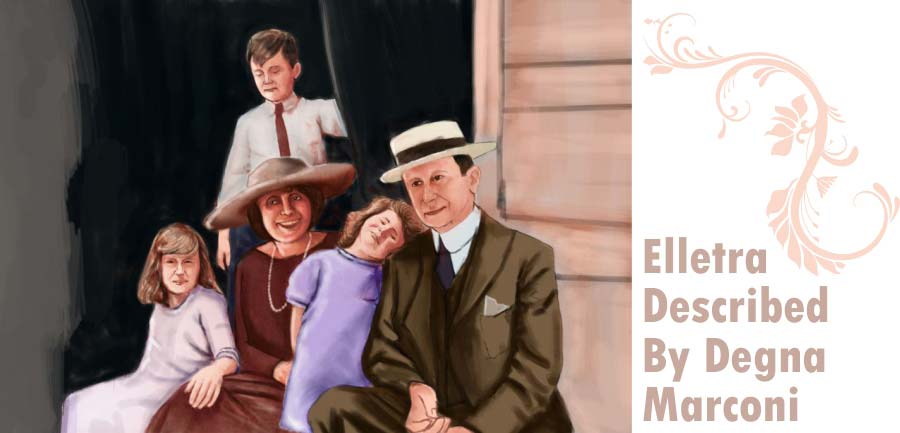
Elletra described by Degna Marconi
In the winter of 1920, Marconi set up the short wave radio station in England as a result of a radio beam aerial designed by his colleague, Charles Samuel Frankin who was a noted British radio pioneer. During the summer of 1921, the former decided to take his family for a cruise. This was one of those times his son always waited for. He even called Bea’s younger sister Lilah, to accompany them in this trip. They were going to sail down the coast to Amalfi Taormina and Messina around the heel of Venice.
Degna, in her first diary ‘My father Marconi’ describes the Elletra as having many saloons (the rooms in the yacht were known as saloons).It had a small wireless cabin where one could smell chemicals and even the chart room had an acid like smell. The main saloon was too cozy and depressing. It also had a piano which Marconi loved to play for his children, especially the song “Boehme or Madam Butterfly.”
The yacht had walnut panelled walls that were adorned with photographs of kings and queens. The dining saloon was the biggest room which smelt of food and had comfortable chairs around a big table. It was also the only room which had windows with a larger view of the sea and land. The yacht also had two small cabins, which according to Marconi, were meant for his daughter and son Giulio. Bea and Marconi’s cabin were much larger with Wedgwood blue and white. There were two guest cabins which were occupied by Bea’s sister.

Trouble calling
Bea was happy as she felt that her marriage still had a chance to rebound; a thought only to be let down by the sight of a young lady waiting at the dock of Venice. When Marconi sold his house Bea was sure that ‘some’ lady was influencing his decisions. However, she was also sure that even if such was the case then he would surely come back to her at the end of the day.
Princess Elise Torlonia, a great friend from Rome was making effort to patch up the relation between Bea and Marconi, so she decided to spend some time with Bea and her children. She later took them to Deauville to cheer them up. Marconi came to pick them up at Deauville aboard Elettra, but by this time it was no more a secret that he was having an affair. The newspaper quoted it as ‘Marconi and a certain lady’. Marconi wanted to marry this young lady who was assumed to be just 17. However, on Bea’s advice, he discontinued this relationship as the age difference between them would look very inappropriate.

Work, work and work
Marconi now dedicated all his time to his business and experiments. He started spending maximum time on his yacht which was now his home and laboratory as well. He held his parties and meetings and communicated with people from his yacht. In June and July of 1923, he carried out major works on short -wave beam system. Although his yacht was not meant for a long cruise, yet, he took a long cruise in the Atlantic Ocean to carry out his experiment. He travelled to the island of Cape Verde while being in constant contact with the station at Poldhu. Signals were received at a distance of 2250kms and were almost hundred times louder. His experiments worked, and while on cruise itself, he announced that the communication problem of long-distance had been solved. He started a new trend for the radio technology, short wave transmitter which was cheaper than the long wave transmitter. This was a new trend and invention.
In 1924, the Marconi Company (originally known as Wireless telegraph & Signal Company Limited) obtained a contract from the England Post Office to establish short wave communication between England & British Common Wealth Companies.

In Love again
In 1924 when Marconi had stopped visiting the house completely, and his visits to his children were almost nil, the couple applied for a divorce. At the same time, it is said that Bea married Marquis Liborio Marignoli who was her next door neighbour and had proposed her in September the same year. Bea had initially denied the proposal but after her divorce, she accepted it.
Marconi was now free to marry again. After his divorce, he started visiting his children more often, taking them on short trips and summer vacations. During this time among many people he met in England, there was one who stood out for him and she was Christina Bezzi Scali, a sophisticated, fair girl with blue eyes and lovely features. Marconi was charmed by her quietness and demureness. She knew how to behave, speak and dress in public, unlike Bea. Maybe, it was because Christina came from a noble family; her parents were members of the Pope’s guardian Mobil. Her father, Marchese Sacchetti owned a palace in Via Givlic in Rome.
Marconi started visiting her more often, as and when he could. He was a bit laidback with respect to work, as his business was flourishing and he had name and fame. He would meet Christiana on the beach at Viareggio or at a small restaurant, the Sauoia. Marconi was 52 but as his daughter Degna says “he was ageless”, his health vigorous, his energy influencing and he dyed his few grey hair at his temple. He was any woman’s dream. Christiana was 26, and had never left Rome.
It is said that Marconi consulted Degna about marrying Christina. She was very happy and gave her consent. She also knew that he was very lonely in his life. She wanted her father to have the companionship of a woman who would give him ‘lasting pleasure’ and keep him happy. Degna, while growing up, had seen the relation between her parents grow sour. Bea was a traditional house wife, who never interfered in her husband’s work and was never able to cope up with the fame. Marconi taught Bea how to dress and speak, even taught her the Morse code, but she was never interested in his work.
Christina was the right women, and Marconi decided to marry her anyhow. Her parents did not agree to this relation as Marconi was a divorcee and quite elder to her. His name and fame did not matter to them. Christina was however not deterred by all this.

Categorical issue for divorce
As per the Roman Church laws Marconi was not considered divorced. He could marry Christina only if he got an ‘annulment’ of his first marriage. The three grouts of annulment countenanced by Rome were: one- if a marriage has been contracted under moral or physical pressure, two – if lack of consent can be proved and three-if one of the two married non-catholic is converted to Catholicism and the other partner is willing to cohabit peacefully.
According to Marconi’s lawyer, the second point- lack of consent was the only ground, on the basis of which he could not get married. Marconi had to prove that the divorce with Bea was one of mutual consent. On the other hand, he could prove, that during his first marriage there were many mental reservations by either contracting parties. If this could be proved, then the first marriage would be considered null and void. But to prove the same, they needed witnesses. Marconi remembered that Bea’s mother had initially not agreed to his proposal as he was a foreigner, and Bea too had first declined his proposal saying that she was not in love with him. Marconi also needed to establish that he had an arrangement with Bea that if the marriage proved unsuccessful, they would divorce.
To prove all this he had to talk to Bea, who was now married and had a child named Flaminia from her second husband. He did not know how to approach her, so, in June 1926 he wrote her a letter explaining his problem. It was Bea’s second husband who convinced Bea to testify for Marconi and said that she should not become an ‘obstruction’ in the way of Marconi’s happiness. Bea agreed after a number of letters were exchanged and she had spoken to her relatives and friends to testify for Marconi in the Roman Court. On April 27, 1927, the Sacra Rota Ecclesiastic annulled the marriage of Marconi and Bea on the grounds of ‘lack of consent’.

Journey to happiness
12th June, 1927, at the age of 53, Marconi married Christina Bezzi Scali. A religious ceremony was held at the Church of Santa Maria Degli, Angeli on June 15. Marconi honeymooned in the villa San Mauro near Rieti. It was 28 years since Marconi had made a trip across the Atlantic. He sailed with his new wife for America in October on the ship ‘Biancamano’. New York welcomed them by arranging a Roman holiday for the new bride and groom. A daughter was born to this new couple on July 20, 1930.Marconi named her after something he loved the most besides his work. She was named Elletra.

Back to Work
As time passed, Marconi started taking great interest in the technology for television. He supported the EMI (Electric and Musical Industries Ltd) high definition system. His company got involved in television in 1934. He started working with EMI Ltd in a venture to develop high definition television system using electronic scanning, with images displayed on a cathode ray tube. This system was rival to John Logie Baird, who had developed the mechanical system and produced 30-line images nine years earlier, using a rotating disc and sending images across the Atlantic. The EMI- Marconi’s system turned out to be more efficient with concerns to its development and also flexible system.
Together, they had defeated Baird.
Even while being engrossed in work, Marconi did not forget to visit his children. In the meantime, Christina persuaded Marconi to embrace the honours and distinctions that once embarrassed him. She removed him out of his cubicle and “terribly busy” excuses. He was now learning to face the cameras and the endless questions from journalists. Christina too was now busy cutting ribbons and inaugurating on her husband’s behalf. This marriage proved that the failure of his first marriage was not entirely his fault.
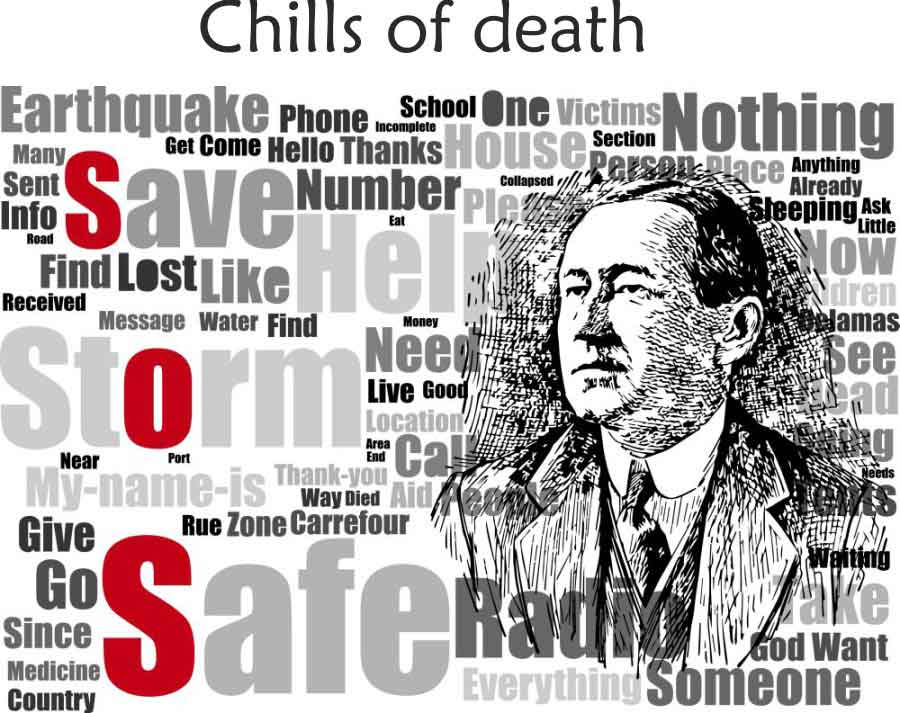
Chills of death
Marconi was now back in England in his home near the sea. A man who was considered ageless by his daughter Degna, now had wrinkles under his eye and walked with a cane. His wife was always by his side. Marconi, who loved to look out at the sea and take long walks, now, started getting cold chills the moment the breeze blew. He thought he had caught cold at first, which was the cause of a pain in his chest but the chills and pain kept on increasing. The spasms grew more acute when he arrived in London. Mr. Prince, a heart specialist, diagnosed this as a severe case of ‘angina pectoris’ (a chest pain which occurs due to stress or poor blood flow in the blood vessels).
However, Marconi’s deteriorating health did not stop him from experimenting further. In the autumn of 1933, he was back to work and had started travelling, lecturing and conducting meetings. But not for long! On December 16, 1935, when on a journey between Paris and the Italian frontier, having had very little sleep, he joined his wife for breakfast, he collapsed. Degna, who was also visiting Marconi at that time, was informed by a panicked waiter, “His Excellency is not well.” Degna found her father seated on the breakfast table, his eyes closed and his head tilted on one side. Dr. Pace of Genoa, who was sailing in the same ship, offered assistance. Marconi was unconscious and had to be carried to his berth. Dr. Pace gave Marconi an injection so he could sleep peacefully till the journey ended. He even offered to accompany them to Rome.
On reaching Rome, Dr. Pace advised Marconi to take bed rest for a few weeks. This was an end to his travelling beyond Italian waters. Now he spent his time resting at home. On April 25, 1936, on his 62nd birthday, Marconi received the news of the death of his elder brother Alfanso who had died due to a heart disease, the same disease which had killed his mother too. Marconi was found to be suffering from the same illness.
Marconi wished to visit London but his health did not permit the same. He still wished to sail to London in his yacht, something he missed doing since a long time. He suffered three minor heart attacks in May and therefore, the doctors advised him to stay closer to Rome.
On 20th July, 1937, Marconi breathed his last at 3:45 am at his home in Via Candiotti, Rome. The funeral took place the next day at six o’clock in the evening. According to a newspaper, thousands of official and unofficial people walked behind Marconi’s coffin. His coffin was carried across Rome, to the Church of Santa Maria degli Angeli. There were no flowers or candles, only herd of people to pay their last tributes to the great man. As a mark of respect to him, radio stations all over the world observed a two minute of silence; the entire Japan stood for three minutes; the operators at the Genral Post office stood beside their transmitters and closed their switch boards. The British paid him the most appropriate tribute- they silenced their airwaves. Throughout United Kingdom no radio messages were transmitted or received, and all the BBC’s wireless stations went off the air.
This was a homage which was never ever seen before, for a person who changed the way the world communicated. In later years, Marconi’s invention became a mode of entertainment and information. He taught people that we could make it possible for things to exist that one could actually not see. His wireless radio gave birth to the wireless spectrum or to say wireless technology.
Soon the word “radio” was adopted by the United States Navy in 1912, followed by Europe and Asia to distinguish it from several other wireless communication technologies. But the British Commonwealth countries continued to commonly use the term “wireless” until the mid-20th century, though the BBC magazine has been called ‘Radio Times’ ever since it was first published in 1920.
Over time, the technology involved in electronic systems has steadily advanced to where we are today. Today’s Radio or Wireless Systems are light years ahead of their early 80’s ancestors.
Wireless communication has changed the dynamics of the working environment and workforce mobility. Without being restricted to a fixed location or formal work-based environment, professionals or people in general can work, communicate, entertain themselves and live their wireless free life anytime from anywhere.
“If you believe you can – and if you try you will”
Biography of Guglielmo Marconi | 5 Comments >>
5 --Comments
I really enjoy the article. Fantastic.
I think other site proprietors should take this website as an model, very clean and excellent user friendly style and design, as well as the content. You're an expert in this topic.
Some genuinely superb blog posts on this web site , regards for contribution.
Wonderful, what a web site it is! This website provides useful data to us, keep it up.
Leave Comment.
Your email address will not be published. Required fields are marked.
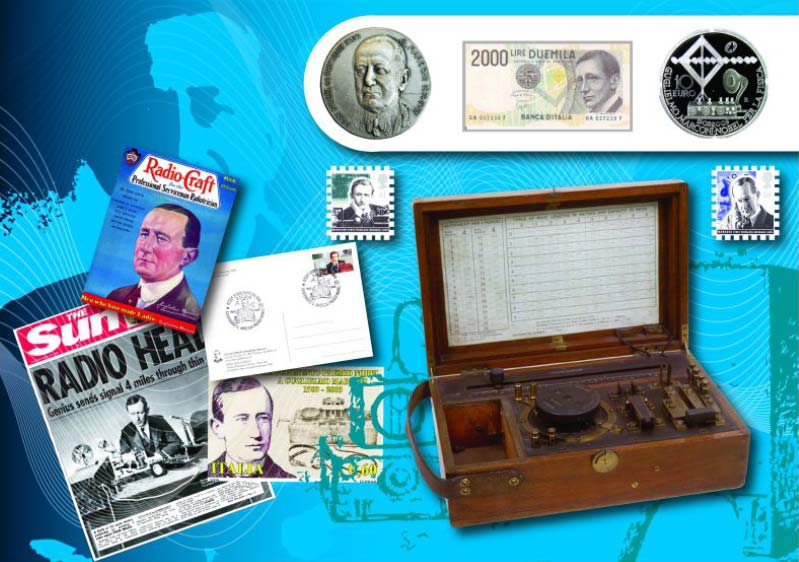
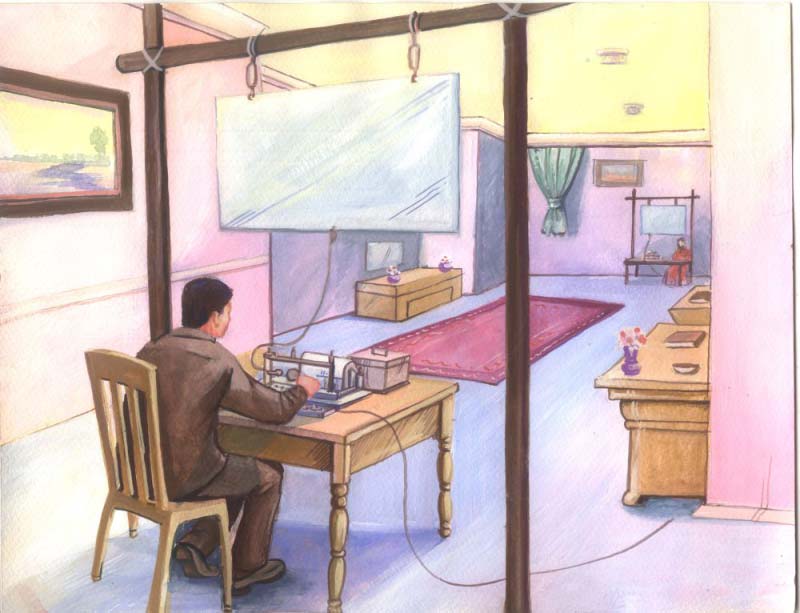
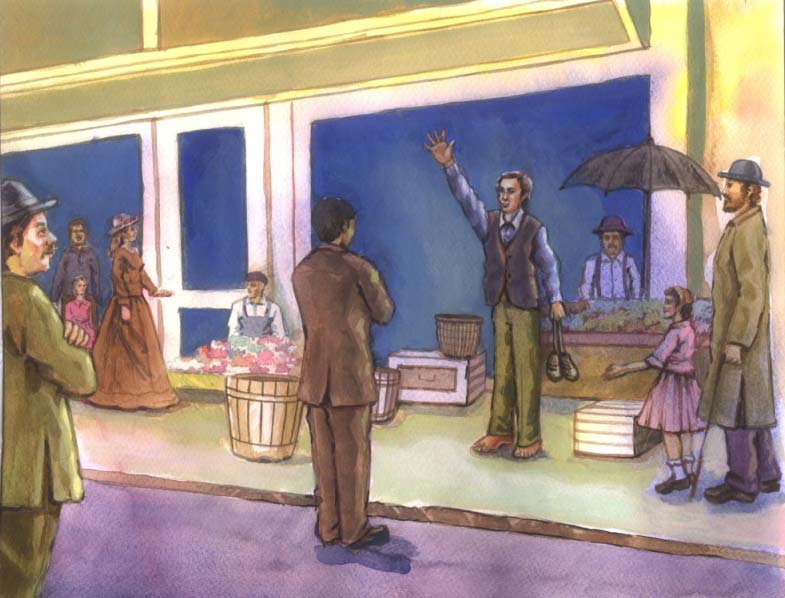
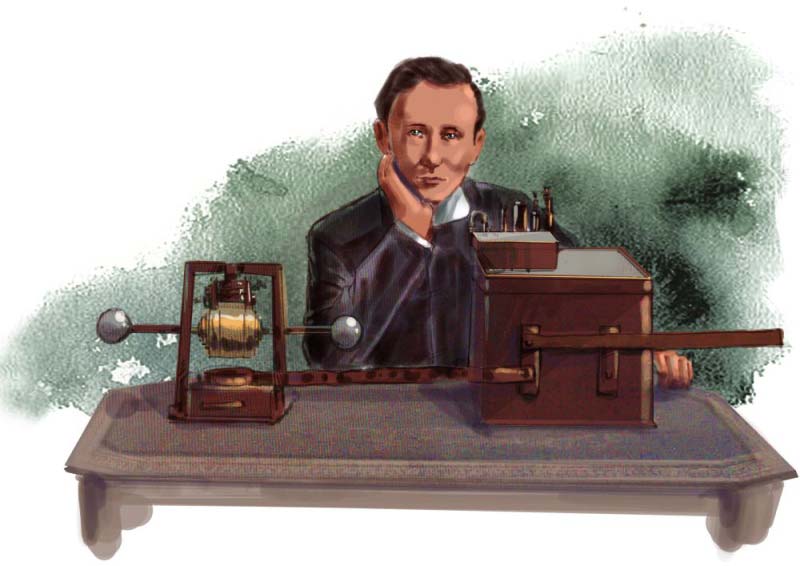
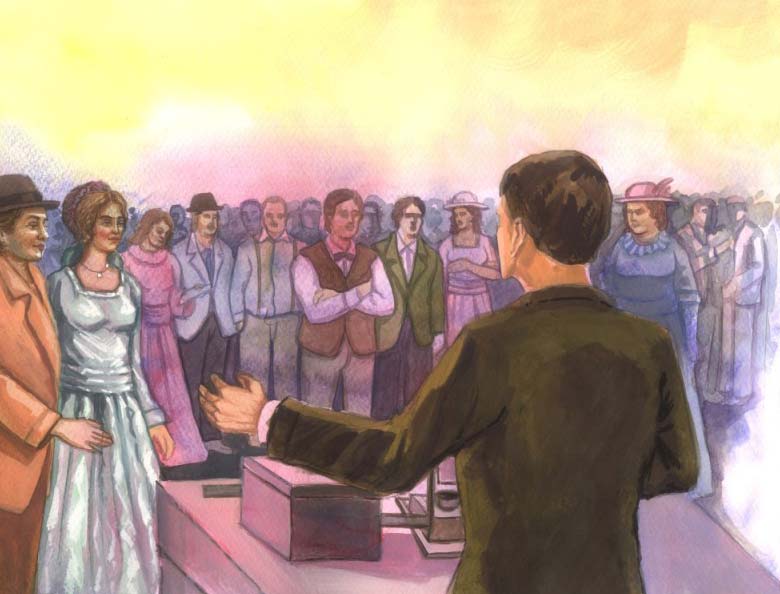
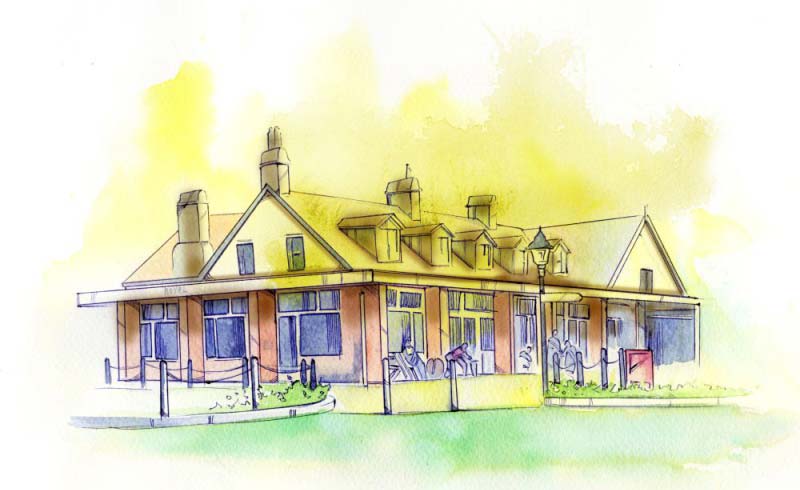
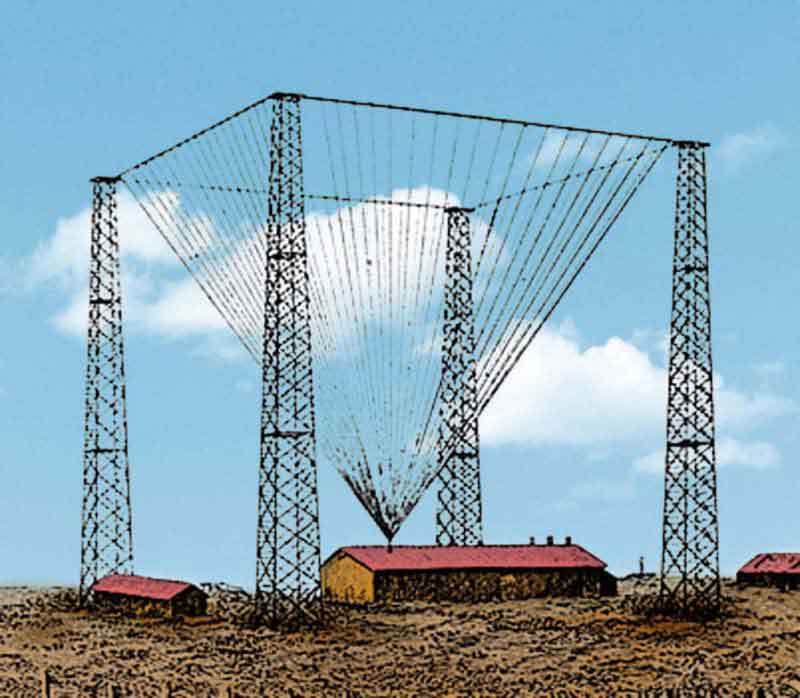
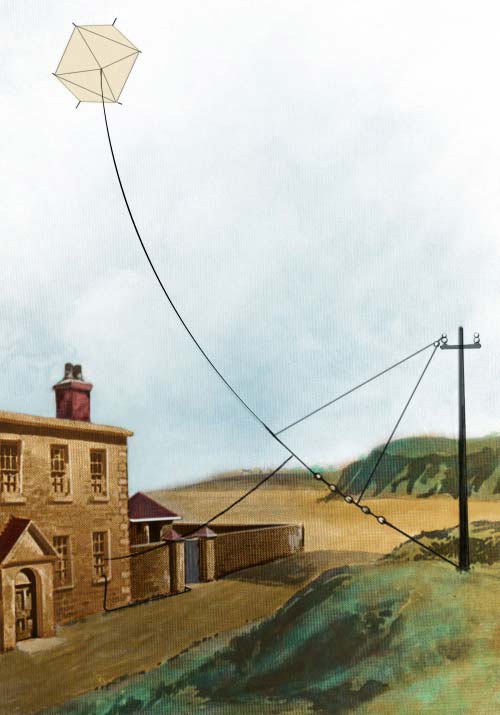
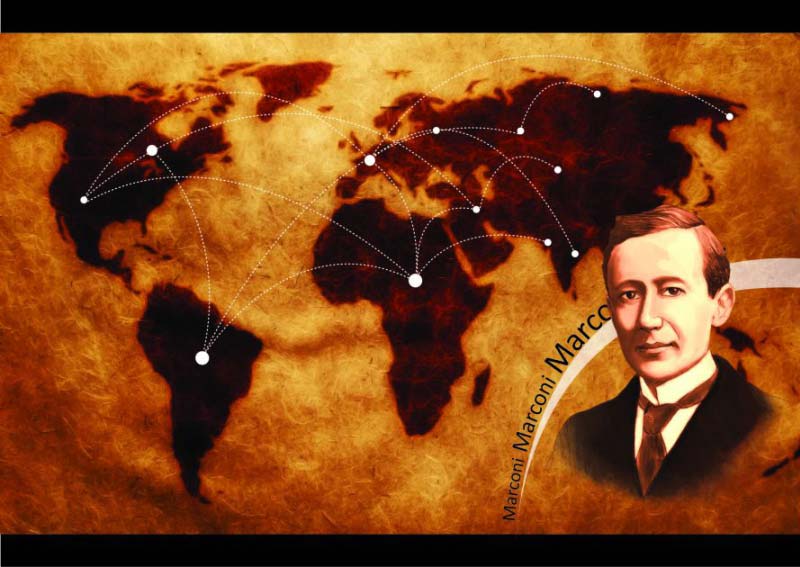

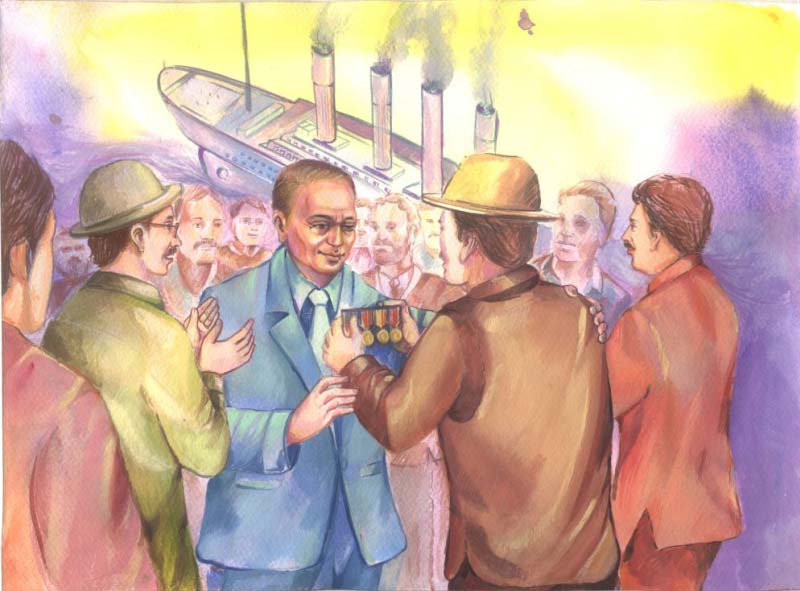
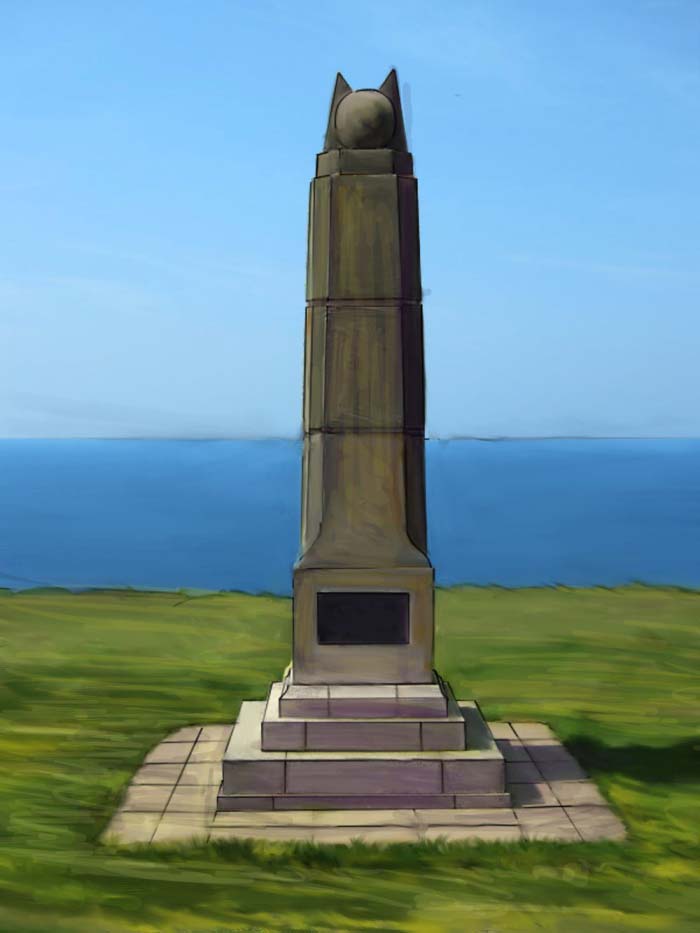


Very impressive!!!